-
- RF Series
- Connector&plug-in unit
- Plug-in unit
- SD card holder
- SIM card holder
- Thimble /wire protector
- Crimping terminal
- Waterproof joint
- 短路帽/跳线帽
- 压线端子胶壳
- 屏蔽夹
- Waterproof and dustproof terminal
- Industrial&automotive&military
发布时间:2021-12-31作者来源:金航标浏览:2498
BOE recently announced its financial report. The profit in the first quarter was very good. A profit of 5.2 billion yuan, with a profit margin of more than 10%. This enterprise, which has been criticized as "eating down the Treasury granary", has finally turned around. In the first quarter report of 2021 released by TCL technology, the overall operating revenue was 32.1 billion yuan and the net profit was 3.2 billion yuan, of which Huaxing achieved a net profit of 2.4 billion yuan, showing a strong performance. In many dark semiconductor industries, LCD panels give people a bright color.
Then how did the LCD TFT-LCD industry shake across the sea and rise from the United States, Japan, South Korea and finally China. It can be said that this is a legend of three and a half generations of LCD panel industry growing in the world.
The first is the unfulfilled ambition of American enterprises. The United States invented almost all the basic technologies about liquid crystal display. TFT-LCD is a liquid crystal display controlled by thin film transistor. It actually includes two technologies, one is TFT thin film transistor and the other is liquid crystal display LCD. The American Radio Company RCA, the inventor of color TV, was the first to try to industrialize it. RCA is the leader of American TV industry. It was the first idea to develop a wall mounted TV. This dream was around 1960. However, the arrogance of large companies does not look up to the gadgets such as calculators, clocks, meters and displays that the LCD R & D team is trying to study. The management believes that the liquid crystal is not silicon, too low. The material is not pure according to semiconductors, Like a garage "That's all. So they turned to challenging IBM's computers. There is no doubt that it was a fatal dead end. In a word, the most successful TV enterprise had the most advanced display technology, and finally starved to death. The most advanced display technology did not become the mainstream of the TV industry until forty years later. The other person who took over the RCA magic wand was Westinghouse Electric, which was alone in China A desolate TFT field exploration. However, Westinghouse Electric has withdrawn from the TV business and has not been a computer terminal. Therefore, it lacks the traction of back-end applications and naturally gives up halfway. Other major American enterprises involved in LCD, such as GE home appliances, at & T, Motorola, Xerox and HP, finally failed and gave up flat panel display.
The failure of American LCD can be said to be the failure of "direct attack target strategy". British military scientist lidhart pointed out in the theory of strategy that curve strategy is often the most effective. American enterprises directly aimed a new display technology at the grand goal of television, and finally gave up halfway. This is an ambitious, direct attack and never enter the game.
Then talk about the second generation of LCD: Japanese enterprises. Japan followed the electronics industry very closely at that time. At that time, the most important successful manufacturer was Xuyu Seiko. It entered the semiconductor field in order to produce quartz watches. It was the first digital LCD watch produced in 1973. This watch with a glittering screen has ignited the ambition of Japanese TV manufacturers. Xu Yu didn't go too far. Although this small screen made a great breakthrough in video recorder and projection screen, its unstable finance made it fall halfway. Sharp took over the TFT-LCD flag. Sharp has been purchasing patents from RCA company in the United States to produce TV. In fact, it is a semi skilled terminal assembly company similar to Lenovo in the medium term. But sharp opened an amazing gap in the calculator, which is a story related to CPU. Intel's CPU chip was first activated by Japanese computer manufacturers. Sharp reduced the 3000 element calculator to 3!! The display screen is one of them. The chip is another, plus a solar cell. The most perfect, simple and powerful calculator in the world explains the story of chip, liquid crystal and photovoltaic triple painting: the technology and equipment of these three have such amazing coupling. Speaking of this, never underestimate a calculator. There were more than 80 top Japanese manufacturers here, and finally there were only three in the world. The computer detonated the general chip (Intel) and the liquid crystal display. Sharp's computer is called "neurotic calculator" because it consumes too much power. But its feet are the first time that human beings have really stepped into the river of liquid crystal display. Then, there are only trivial details left in the long history, which are nothing more than technology, yield, materials, equipment and so on. Although it is difficult, it is the best place for Japanese industry. This market has shown amazing explosive force. In the decade from 1990 to 2000, the technical change rate of glass substrate size exceeded that of semiconductor in 25 years.
The success of Japanese enterprises lies in the application of these products from the edge. From watches, micro TVs and other unrelated products to laptops, screens, and finally to televisions. The TV hanging on the wall finally became famous. However, this is the result of the approximation of countless curves. Both cash income and equipment progress have laid a solid foundation for the rise of flat-panel TV.
However, even if the original industrial track was created, Japanese enterprises still did not laugh to the end. Don't say to be the leader, it's basically someone close to the edge of being out. In the current LCD layout, JDI, a Japanese display company, is still struggling with OLED, with a revenue of less than 40 billion yuan in 2020, less than 1 / 3 of BOE. Sharp is also trying to find counter attack opportunities, but the prospect is not optimistic. The failure of LCD in Japan reveals another cold side behind the huge profits of LCD: the walking gold sucking beast that comes and goes in cycles. This fickle capacity characteristic can not be withstood by cautious and subtle Japanese enterprises. Similarly, it is the same reason that semiconductor memory first flourished and then declined in Japan. So far, there is only one armor man (originally called Toshiba). Japan's industrial structure does not support this industry at all.
Then tell the story of three and a half generations of LCD panels. Americans pioneered LCD display, but went straight to the grand goal: TV. The challenge was too early and failed. This is a failure case where the technology is immature and ambitious. The Japanese noticed the master's mistake, so after taking over the technical stick, they carefully began from marginal non mainstream industries such as calculators, projectors and watches, and gradually expanded to the TV LCD panel industry. In this process, LCD has not been valued by American giants. An IBM engineer commented that LCD has become a new type of small mammal in the rock corner, but dinosaurs still live in the world. But the attention of dinosaurs like IBM is focused on the competition of computers - Dinosaurs fight in the field of PC. Even IBM, which has a joint venture with Japan to produce tablets, is half hearted. This emerging market is perfectly left to Japan. The laptop screen is not only the last springboard for LCD panel to big TV, but also the brightest stage for the globalization of LCD panel application market. Notebook computers shine, so that the LCD panel industry has firmly established its independent core position.
This is the result of a global division of labor. The rich product application end and the close combination of knowledge throughput between suppliers and OEMs have greatly promoted the development of LCD panel industry. This also explains the strategic failure of the United States in fighting against LCD panels. The United States established the tablet alliance in 1993 and rejected Samsung and LG. At that time, the American industry was still arrogant, and the military actively participated in a large amount of funding. But this narrow market cannot compete with the tide of globalization. American industrial policy failed, and Japan enjoyed the fruits of victory alone.
However, the LCD panel industry is still a gold burning beast and has a moody cycle. The Japanese still lost.
The third generation of successors is Korean semiconductor. Korean enterprises, mainly Samsung and LG, have adopted an aggressive investment strategy to forcibly intercept the Japanese LCD industry. The technical threshold is of course important, and the talent war is the top priority. South Korea began to use Japanese engineers on Sunday to invite Japanese engineers to South Korea for advice. Korean enterprises have the courage to invest heavily when the LCD is weak, so as to bring down the cautious pioneer Japan. The competition of the whole industry has changed from "R & D orientation" to "investment orientation" and the concept of "liquid crystal cycle" has begun to play a key role. Japanese industry ignores this. Korean industry is like bandits without masks, counter cyclical operation time and time again. In the second anti periodic operation of liquid crystal fading in 1995, it gained a firm foothold; In the decline cycle of 2001, Samsung and LG both gnawed their teeth and invested heavily. These two reckless challengers, anti sharp, established the status of king. This landmark dividing line is the five generation line.
In this process, Samsung has been repeatedly praised for the brave strategy of fearless investment, but in fact, this is just an exaggerated praise, but it is just a supplementary shot of wise planning after the event. When Samsung officially established the TFT-LCD business unit in 1991 (the previous research team also tracked it for 7 years), its real intention was based on its systematic strategy rather than profit pursuit. On the one hand, its TV business needs a large number of screens; Another consideration is that it also needs to flatten the trough of the memory dram service with strong periodicity. On the track of DRAM, it has joined hands with the United States to almost completely bring down the Japanese storage industry, which has experienced the industrial sadness from five golden flowers to Toshiba. South Korea's LG and Hyundai have shown considerable strategic determination and willingness, knowing that they will enter at a loss.
The five generation line is a dividing point between the advance of Korea and the retreat of Japan, which is equivalent to the Maicheng of Guan Yu of the Three Kingdoms. Since Mai Cheng was lost, Zhang Fei and Liu Bei also lost their square feet, and they successively returned to the West. Shu has entered the era of counselors from the era of heroes. The latter three kingdoms are the intellectual contest between Zhuge Liang and Sima Yi. The size of the fifth generation line just meets the economy of 26 inch TV. With the rapid development of South Korea, Japan has entered the stage of parry and counterattack.
At this time, the winner began to appear. The defeated Japanese have to transfer technology to Taiwan, China. At that time, China Taiwan, because of the forward-looking layout of the Institute, has accumulated a strong industrial foundation in the semiconductor industry. It is natural for it to undertake the LCD panel industry. In 1998, six enterprises in Taiwan, China, were authorized by Japanese technology to enter the TFT-LCD industry. This is known as the "first year of the LCD panel industry in Taiwan, China." Once the world's top two, AU Optronics and Qimei were established at that time. Its technology comes from Panasonic and Fujitsu. Qimei is still an active role. The LCD panel industry in Taiwan in China was able to dominate the world in early twentieth Century. Technology benefited from Japan, and the market undoubtedly benefited from the mainland market. In 2004, the LCD industry in Taiwan, China, had sales of 14 billion US dollars, nearly 70% Chinese mainland, and for a while.
However, the Chinese mainland market must eventually awaken. This determines that the Taiwan region of China can only be a transitional role. The three and half of the story of LCD panel industry is finally coming from Chinese mainland. They are also two brave and fearless enterprises. One is the bold BOE, turning defeat into victory; One is Huaxing optoelectronics, a bold subsidiary of TCL, born in the sky. Both companies tasted the sweetness of rich profits in the first quarter of this year.
BOE started from an unknown manufacturer of authorized display technology in 2003, which is also the opportunity of the fifth generation line. From South Korea Hyundai, which has suffered from industry turbulence and spits sour water, and does not want to be unable to support it anymore, BOE took over the fifth generation line and began the journey of deep roots. Its turnaround will wait until six years later, that is, it developed its own patented hard screen technology in 2009. This allows you to find your own protective soft hedgehog armor in the liquid crystal technology market full of patented vortices. This asymmetric patent cross technology enables Chinese mainland LCD industry to find a base for competition with international predators. From the 2020 annual report, BOE has determined to find the strategy of synchronous development of panel and terminal display in the application terminal of the Internet of things.
Huaxing optoelectronics is another magical seed. Sharp actually stood up to the Shenzhen government in 2008. The agreed sixth generation line actually changed its direction and flew to Nanjing. The Chinese partners TCL and Shenzhen municipal government, which are difficult to ride a tiger, fight with one hand and one back. The 8.5 generation line was really established three years later. This is a dead and young project, in which the high fighting spirit of heroes and heroines and the accumulation of talent and knowledge are everywhere. So far, Huaxing optoelectronics has become the most profitable business unit of TCL. For other home appliance manufacturers fighting in the sea of blood, it is really a layout worthy of careful consideration.
In this way, the TFT-LCD market of China's Chinese mainland has been forcing the Korean enterprises to turn to the new OLED market and continue to guard against China. Samsung's LCD plant in Suzhou was also transferred to Huaxing optoelectronics.
The three and a half generations of LCD have established the skeleton of this industry legend.
But we can't say that the first generation and the second generation didn't get anything. They move upstream in the pattern of division of labor in the industrial chain.
First of all, we can't say the failure of LCD in Japan. Around the TFT-LCD liquid crystal display industry first established in Japan, the Japanese quickly built a moat: a strong supply chain. This includes, materials such as glass substrate xuniti; Scanning lithography machines such as Nikon and canon. In fact, they also dominated the era of chip lithography until they were completely defeated by the launch of extreme violet EUV by Dutch ASML, and lost the market of advanced processes; Color film and polarizer of Nippon electric; Indium tin oxide electric film provided by Japanese vacuum technology. This is a unique law of Japan's industrial development, which is the synchronous coordination between the main force corps and the winger Corps. This powerful supply chain still constitutes the upstream of absolute control over the LCD industry in South Korea and China.
The upstream manufacturers of semiconductors in the United States have made great profits here. American applied material am also smelled the budding smell of the LCD panel industry, so it established a subsidiary specializing in display technology and equipment in Japan in 1991. This is not surprising for am. In 1989, due to the rapid development of Japan in the semiconductor industry (especially storage) in previous years, the sales of Yingcai in Japan accounted for 40% of the total sales. Yingcai is still very clever. It will set up the headquarters of the display equipment company in Japan to better listen to the gunfire that the Japanese LCD company is fighting hard for yield, and leave the assembly in California. In order to obtain the data of Japanese factories for improvement, Yingcai engineers are stationed in panel manufacturers, working three shifts seven days a week. This is an amazing knowledge exchange. Toshiba and sharp, through mutual throughput of materials with the United States, have achieved the earliest chemical meteorological deposition equipment CVD (now it has become the main product of Shanghai Zhongwei, a popular Xiaosheng of China's science and Innovation Board). Corning Glass of the United States has also reaped a lot here. Its early intervention has become the leading enterprise of flat panel display glass substrate. In 2005, Corning showed that the revenue of the business division was US $1.7 billion and the profit was as high as 65%. This amazing profit enabled it to survive the subsequent economic crisis. More importantly, it is in the process of polishing the screen, ushering in the glorious era of small-size screen of smart phone. At jobs' strong invitation and Apple's reverse R & D subsidy for mobile phones, Corning's Gorilla glass has created another brilliant era of mobile phone screens, up to now.
In the 60 years of vertical and horizontal industry, the three and a half generations of flag bearers of LCD panel have their own mysteries. The first generation of the United States was defeated by the starting point of industrialization, while the second generation of Japan was defeated by the continuous expansion of investment scale. However, both of them are moving upstream of the industrial chain. The third generation of South Korea won the world, and the third and a half generation of China was brilliant. This road is far from over, and the competition in the future is still in the process of continuing. During this period, the choice of technology routes in different stages of enterprises constitutes a rich and bright history of technology strategy. The choice of technology route and how to become the technology centripetal force at the key turning point are worth remembering and pondering the experience of every entrepreneur.
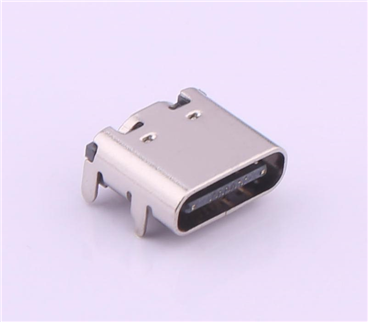
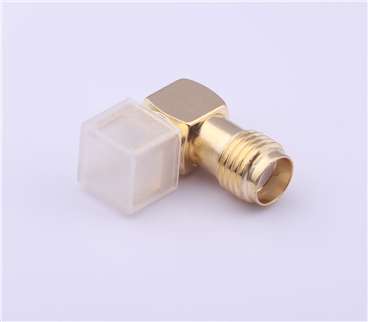
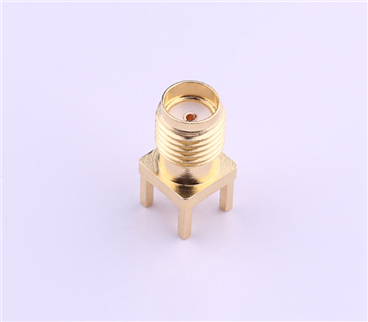
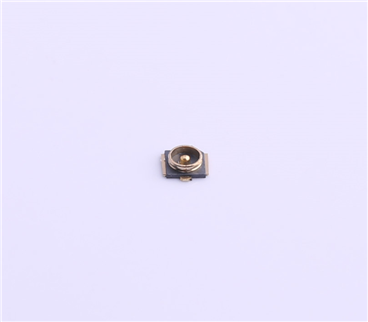
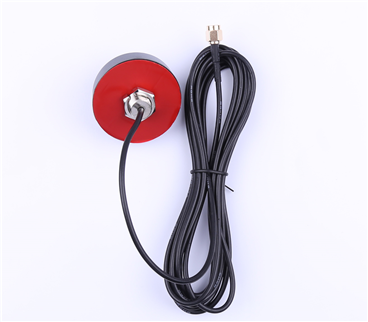
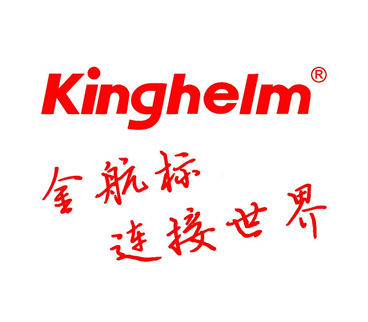





Copyright © Shenzhen Kinghelm Electronics Co., Ltd. all rights reservedYue ICP Bei No. 17113853
